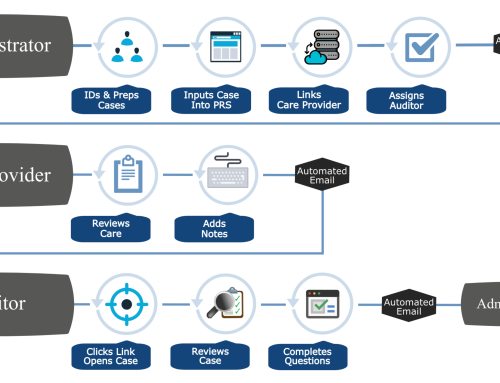 When was the last time your organization performed a SWOT analysis? If you aren’t familiar with SWOT (strengths, weaknesses, opportunities and threats) it’s a widely used strategy in many industries, not just healthcare, for identifying areas for improvement. You can break SWOT down even further:
When was the last time your organization performed a SWOT analysis? If you aren’t familiar with SWOT (strengths, weaknesses, opportunities and threats) it’s a widely used strategy in many industries, not just healthcare, for identifying areas for improvement. You can break SWOT down even further:
Strengths: What sets your hospital apart from all the rest? What can you offer that makes you competitive?
Weaknesses: What puts your hospital and employees at a disadvantage compared to other hospitals? What of these factors can you change?
Opportunities: How can you show your strengths to others?
Threats: What could cause big trouble for your hospital or employees?
The idea behind a SWOT analysis is that by asking these questions your organization can arrive at actionable answers – in other words, you can make a plan and stick to it.
There are three areas of focus that you need to consider throughout an organization analysis: it’s called the “three-pronged approach”. It encompasses financial, operational and clinical elements that come together to form a structured and replicable standard of analysis.
Financial | Organizational Analysis
The word in healthcare these days is money – so financial analysis is probably front and center on everyone’s mind. All the talk of accountable care, managed care and bundled payments is likely to have everyone’s head spinning when it comes to analyzing healthcare costs. Still, financial analysis is a major prong in the three-pronged approach. Medicaid and Medicare are heavily influencing what hospitals and providers think and do about compensation, and patients are now more than ever aware of just how much it costs to be sick. They also know that with so many changes in billing and coding (buzzword: ICD-10) it’s more important now than ever before to double check those itemized statements to make sure there aren’t any errors that will cost them. A continued focus on reducing readmissions (to save money) and also reduce the number of denied claims (to save money) have absorbed an enormous amount of healthcare’s time, money and energy in the last four years – and that trend is likely to continue.
Operational | Organizational Analysis
Now more than ever, data is power for healthcare organizations. Whether it’s culled through auditing bodies or done internally, knowing where you stand against the competition is paramount to success. Of course, with healthcare in the midst of major reform, it’s a constant marathon to keep up with compliance requirements and keep tabs on how other hospitals are innovating. It’s hard enough to keep up with what you have to do to operate as a healthcare organization in the United States, let alone devote time and resources to innovating. Some organizations are taking advantage of the pressure-cooker environment and challenging their employees to ‘think outside the box’ – though, this is hard for many to embrace at a clinical level, and we often hear (like a broken record) “but this is how we’ve always done it!” The truth is, that’s the whole problem in a sentence: the way we’ve always done things doesn’t work anymore. Where it gets complicated is that the next best way isn’t entirely clear- and it seems like the possibilities grow each year.
Clinical | Organizational Analysis
All the hypothetical needs of an organization exist on the financial and operational planes – but the proof is in the pudding; and the pudding is in the hospital rooms with patients. On the floor, nurses and doctors are the real change agents in the healthcare industry, and they are the ones whose expertise needs to be tapped to really identify SWOT for an organization. This is a challenge because they also happen to be busy, and in many cases, profoundly overworked. They barely have enough time to treat their patients, let alone be on the cusp of a major healthcare reformation. However, to overlook their perspective, to not listen to their voices, would be a major disservice not only to the patients – but the whole healthcare environment in which everyone, from fiscal to C-suite, is working. On the most basic level, clinical analysis revolves around not just patient outcomes, but their experience. It’s no longer enough to treat a patient- they need the “wow” factor in their care. You need to be efficient and kind, as well as effective. Patients no longer anticipate poor bedside manner – where it might have been the norm in the old days, there is no excuse for rudeness in any industry, and healthcare is no exception.
Making all of these “prongs” come together into a cohesive package is tough, but you’re probably already beginning to see how they interconnect. Once you’ve really looked at each one individually, you can weave them together into an actionable plan of improvement for your organization.





